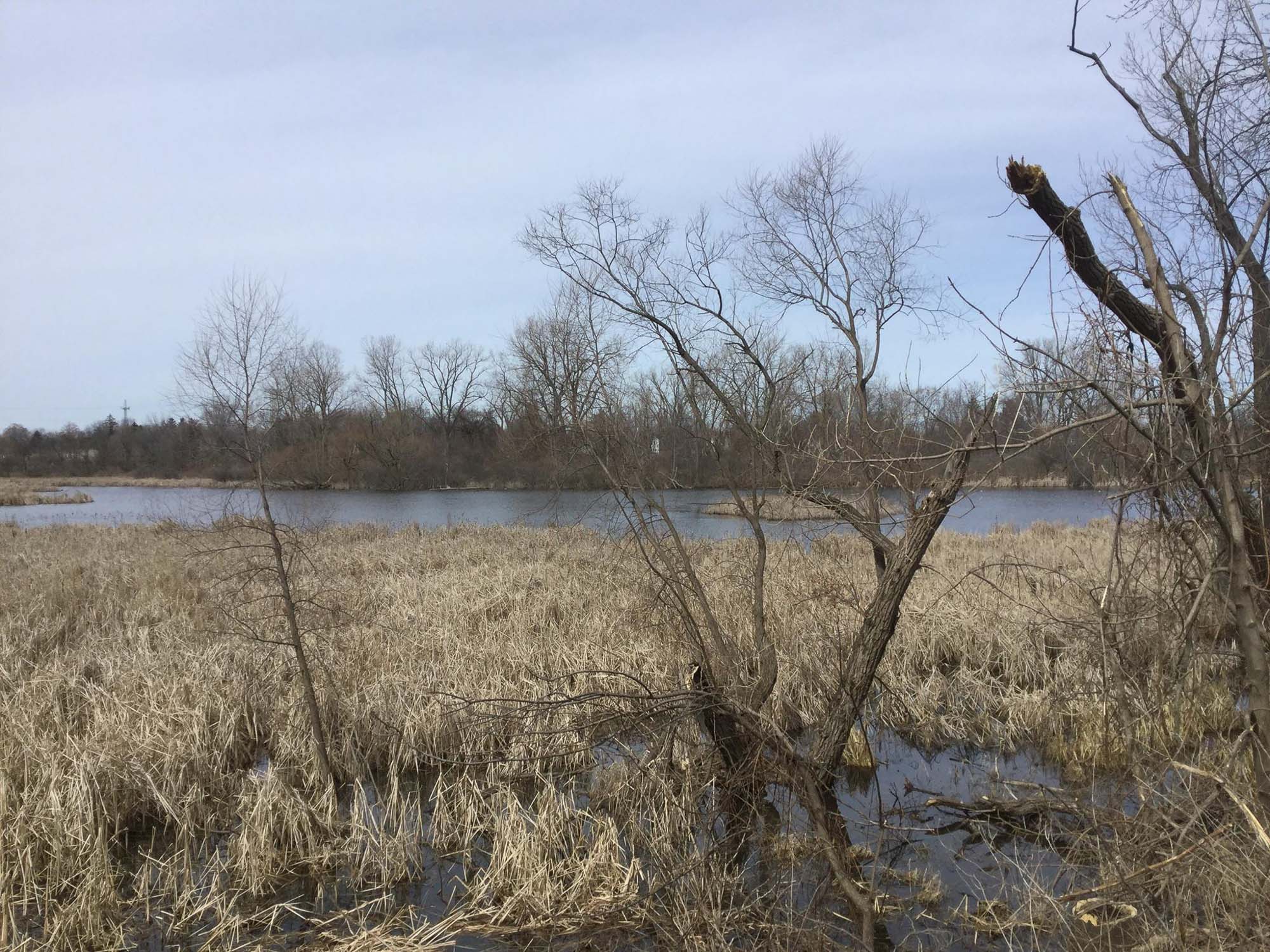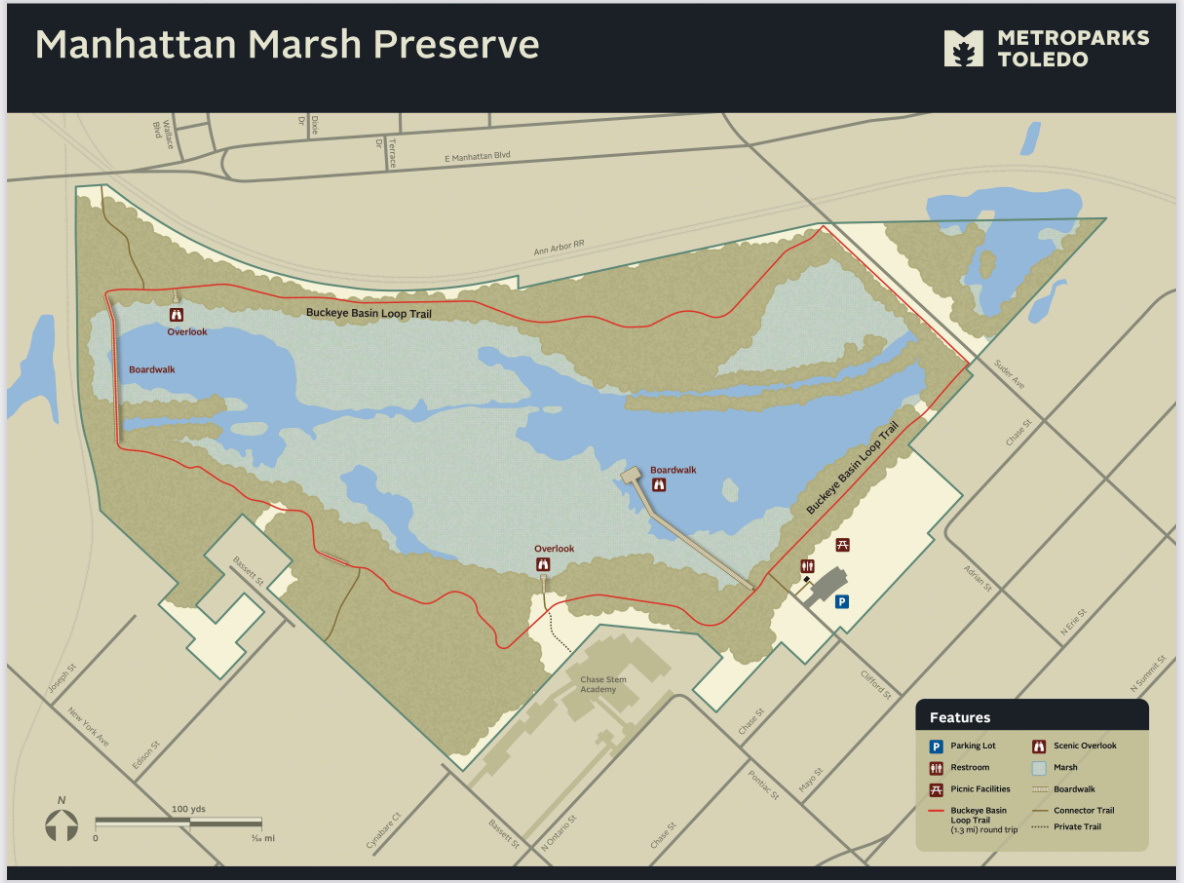Manhattan Marsh Preserve Metropark

Manhattan Marsh Preserve Metropark
510 Clifford Street Toledo, Ohio 43611
Official WebsiteManhattan Marsh Preserve Metropark map
Tips for Birding
As a Metropark, It opens at 7 am and closes 30 minutes after sunset. There is an automatic gate at the parking lot at the northwest end of Clifford Street. If you are in the parking lot after the gate has closed, it should open as your vehicle approaches it.
About this Location
Manhattan Marsh, near Manhattan Boulevard and Suder Avenue, opened to the public in October 2020.
“This is a major milestone for our agency, and for our community, said Dave Zenk, Metroparks executive director. “Not many places in the country say they have a high quality, regional park within five miles of every residence. This is an important step to making northwest Ohio one of the best places to live, work and play.”
New construction in the park includes:
- A 20-car parking lot and entrance drive at the end of Clifford Street
- A 1.3-mile trail with nearly 1,500 feet of concrete “boardwalk”
- Overlooks to provide viewing into the marsh
- Landscaping
- Signage
- And utilities for a precast restroom building
The site is one of the last remnants of a much larger marshland that once surrounded Maumee Bay.
It provides a critical stopover habitat for over 100 migratory songbirds and waterfowl within one of North America’s most significant migratory flyways.
Manhattan Marsh is really a snapshot of the past. One of the last remnants of a much larger marsh that surrounded Maumee Bay, the area was a popular haven for frogs and toads. Their loud songs made the residents’ ears ring, and early Toledo was quickly dubbed with the name, “Frogtown.”
Today, this marsh has been restored and preserved not only for frogs and toads but also for other wildlife such as turtles and birds. Positioned within one of North America’s most significant migratory bird flyways, Manhattan Marsh is an urban oasis that provides critical stopover habitat. Over 100 species of birds like warblers and waterfowl making their long journey north or south will use this Metropark as an important stop to rest and refuel.
Built on the speculation of businessmen in the 1830s, Manhattan seemed a perfect choice for the convergence of newly available transportation modes. Chosen for its natural channel and proximity to the Maumee River, Manhattan had some early success with riverboats and steamboats. But this success would be short-lived as the Miami and Erie Canal’s Side Cut to Toledo upstaged Manhattan, the long-awaited Ohio railroad never materialized and financial backers withdrew support.
Manhattan survived as a town until 1848 when the town lost its platt and was absorbed into Toledo.
Notable Trails
There is one trail that goes around the perimeter. A "boardwalk" that juts into the marsh and two observation platforms.
Features
Restrooms on site
Roadside viewing
Wheelchair accessible trail
Entrance fee
Content from Official Website and Paul Jacyk
Last updated February 7, 2024
